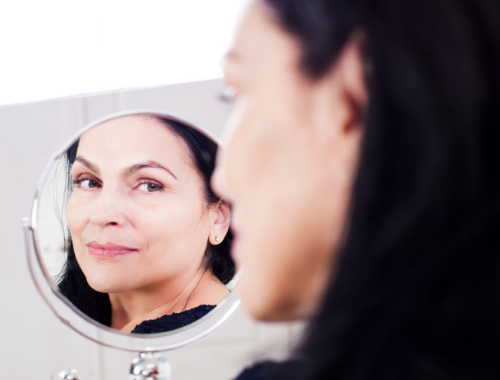
21st December 2018
The science of ageing skin
Your skin is constantly changing and adapting to the environment around you. The weather, temperature, and even pollutants in the air trigger responses from your skin. How your skin ages and develops depends on both your genetics and different lifestyle factors, some of which we can’t control. Ageing skin will eventually come for us all, but why and how does it happen and what can be done to lessen its visual appearance?
The science of ageing skin
Subcutaneous (below the skin) changes are the main culprit for the visible signs of ageing skin. Part of the reason we lose facial volume and structure when we age is because of the loss of fat in our skin tissue. You might be noticing this process in your cheeks, temples, and under-eyes. As we lose subcutaneous fat deposits, our skin loses volume and begins to sag. What’s more, your skin has been losing collagen at a steady rate since your 30s. Collagen is a protein essential to skin laxity and plumpness, so its steady decline will often result in skin appearing thinner. This leads to the unwanted skeletal or sunken effect as our thinning skin is sitting atop our bones with no fat or volume. The fat deposits around our upper-mid face, like the cheeks and tear troughs, tends to shrink and sag. The fat we store in our lower face tends to fall downwards and collect around the chin and jowls. Ageing skin is a combination of natural processes that may have been accelerated by sun damage or inattention to skincare, but it can be treated to help mask these visible affects.
Photoaging, or sun damage, contributes to ageing skin through the sun’s ultraviolet light. The sun’s rays damage vital fibres called elastin in our skin. These fibres, like collagen, contribute to skin elasticity, so when they break down our skin appears loose and sagging. The skin loses its ability to stay taut after expression, leading to unwanted folds and expressive lines that are present even when the face is stationary. Sun damage is also known to damage your skin tone, darkening it in patches and creating sunspots. Sun damage is the perfect example of how our past comes back to haunt us in ageing skin, because it builds up over time to prematurely age us.
Treating ageing skin with medical aesthetics
You might be seeing the signs of ageing skin in one area, but often the problem is rooted elsewhere. For example, the hollows beneath your eyes may seem as though you need dermal filler there, but it could be the loss of structure in your cheeks that is pulling this skin down. Equally, some patients find that dermal filler in their temples and not their cheeks helps improve the appearance of both areas. For volume loss, sagging skin, and loss of structure, dermal fillers are a very safe way of rejuvenating the ageing skin. They are injected into the areas that are causing the problem rather than the areas that need immediate refreshment to treat their root cause. For expressive wrinkles that form when thinning skin is contracted, for example when raising your eyebrows or smiling, we use a wrinkle reduction injection that slightly inhibits their aggressive animation.
Book your free consultation with Professor Jeffry Kashuk in Tel Aviv today to treat the signs of ageing skin subtly and effectively. Enquire online or speak to a member of the team on 0737579004 .


